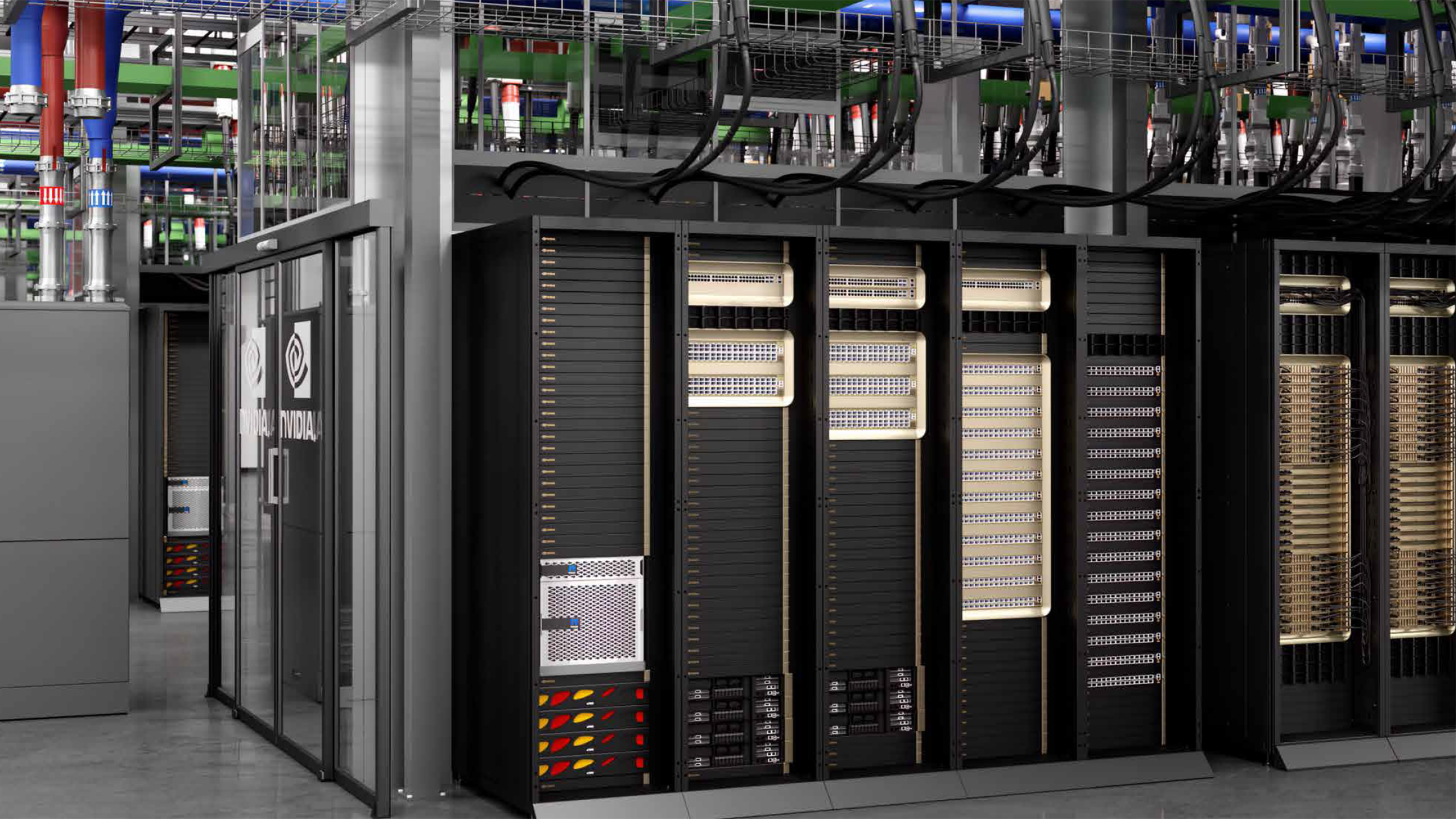Large-scale shipments of Nvidia GB300 servers tipped to start in September — GB200 demand remains 'robust' despite widespread coolant leak reports

While Dell and probably some other Nvidia partners have initiated early production of their GB300-based servers, large-scale shipments of such machines are expected to begin only in September 2025, reports DigiTimes. The rollout is expected to proceed more smoothly than prior generations due to strategic design reuse and improved coordination across the supply chain. Yet, liquid cooling still represents a challenge for original design manufacturers (ODMs).
Transition to Blackwell Ultra
One of the major factors enabling the faster transition is Nvidia's decision to retain the motherboard design used in the current GB200 platform, according to DigiTimes. But that's not all, as Nvidia gives its partners a lot more freedom than before. For the GB300, Nvidia is shifting to a more modular approach, according to SemiAnalysis. Instead of delivering a fully assembled motherboard, Nvidia is said to provide the B300 GPU on an SXM Puck module, the Grace CPU in a separate BGA package, and the hardware management controller (HMC) from Axiado. Customers now source the remaining motherboard components themselves, and the CPU memory uses standard SOCAMM memory modules that are obtainable from various vendors. Nvidia continues to provide the switch tray and copper backplane as before. The reuse eliminates the need for a complete redesign, streamlining production processes and reducing risk.
With GB200, Nvidia provides the complete Bianca motherboard, which includes the B200 GPU, Grace CPU, 512GB of LPDDR5X memory, and power delivery components — all integrated on a single printed circuit board (PCB). Nvidia also supplies the switch tray and copper backplane for this system.
With the GB300 now in validation and early production phases, ODMs report no significant hurdles, DigiTimes claims. Feedback from partners indicates that component qualification is progressing as planned, and Nvidia is on track to increase output steadily throughout the third quarter. By the fourth quarter of 2025, shipment volumes are expected to ramp up significantly, according to DigiTimes.
Wistron, a key supplier of compute boards, has indicated that revenue this quarter will remain flat due to the generational overlap between GB200 and GB300, the report says. Good news, the transition appears to be proceeding smoothly compared to the transition to the current platform, which faced multiple delays due to Nvidia's silicon problems, dense server layouts, and cooling requirements. By now, server ODMs seem to have learnt how to manage all of the challenges applicable to them.
Cooling leaks
Although the GB200 is shipping in high volumes to data centers, it has faced persistent problems with its liquid cooling systems, according to DigiTimes. The primary failures occur with quick-connect fittings, which have shown a tendency to leak despite undergoing factory stress tests. Data center operators have responded by adopting measures like localized shutdowns and extensive leak testing, which means that they essentially prioritize deployment speed and performance over hardware reliability.
Beyond GB300
Beyond GB300, Nvidia is prepping its next-generation codenamed Vera Rubin platform for AI servers. This platform will roll out in two phases. The first phase will replace Grace CPUs with Vera CPUs and Blackwell GPUs with Rubin GPUs, but will retain the current Oberon rack, which will carry the NVL144 name (despite using 72 dual compute chiplet GPU packages). The second phase will involve an all-new Kyber rack with Vera CPUs and Rubin Ultra GPUs with four compute chiplets.
Get Tom's Hardware's best news and in-depth reviews, straight to your inbox.
As Rubin GPUs are expected to be more power hungry than Blackwell GPUs, the next-generation platform will further increase reliance on liquid cooling. While necessary for performance, this cooling method remains challenging to implement reliably, as it turns out from the DigiTimes report. In the GB200 systems, variability in plumbing setups and water pressure across deployments has made it difficult to fully eliminate leaks, leading to significant post-deployment servicing requirements and labor costs.
Follow Tom's Hardware on Google News to get our up-to-date news, analysis, and reviews in your feeds. Make sure to click the Follow button.

Anton Shilov is a contributing writer at Tom’s Hardware. Over the past couple of decades, he has covered everything from CPUs and GPUs to supercomputers and from modern process technologies and latest fab tools to high-tech industry trends.
-
mcfaddenmn May I ask where Digitimes reported widespread leaks reports on the gb200... looked all over on their site but found no such statement.Reply